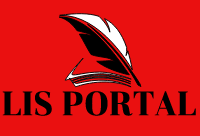International Standard Number (ISBN)
Brief History of ISBN – International Standard Number
An ISBN is an International Standard Book Number. ISBNs were 10 digits in length up to the end of December 2006, but since 1 January, 2007 they now consist of 13 digits. ISBN are calculated using a specific Mathematical Formula and include a Check digit to validate the number.
ISBN consists of 5 elements with each section being separated by Spaces and hyphens
1) Prefix element – It is always 3 digits in length. ( EAN 978 & 979 ) [EAN – European Article Number]
2) Registration group element – Identifies the particular Country or area, Geographical region and language. It element between 1 and 5 digits in length.
3) Registrant element – Identifies particular Publisher, Imprint. It’s Length in up to 7 digits.
4) Publication element – The particular edition and format of a specific title up to 6 digits in length.
5) Check digit.
Explain ISBN chart with 5 elements
ISBN doesn’t indicate
- Its does not give any legal protection.
- No copyright protection.
- No statement on content form and documentation and distribution of book.
ISBN indicates
- It is a product number required to assist in internal processing and ordering while book selling.
- It provides access to bibliographic data bases used by the book industry and libraries to provide information.
ISBN can be applied by publisher of the book, author of the book if he decides to publish the book himself.
Documents / Products which do not qualify for ISBN
- Serials, Journals, record books.
- Videos, DVDs / other media for entertainment, Documentaries.
- Computer games, application packages, Music scores.
- Websites
- Non-text based publications.
Note :- Important Points.
- The 10 digits ISBN format was developed by ISO.
- David Whittaker was the Father of an ISBN.
- SBN (Standard Book Numbering created by Gordon Foster.
- There are over 160 ISBN Agencies worldwide.
On ISBN related questions asked in LIS all exams.
Q1. In 1967 ISBN generated based upon standard book
numbering (ISBN), who created SBN?
1) Gordon Foster
2) Emery Koltay
3) David Whittaker
4) WH Smith
Answer: Gordon Foster
Q2. Who is called as ‘Father of the ISBN’?
1) David Whittaker
2) Emery Koltay
3) Gordon Foster
4) WH Smith
Answer: David Whittaker
Q3. ISBN is issued by……, in India
1) NSL, NSCAIR
2) ILA
3) RRRLF
4) National Library
Answer: RRRLF
Q4. Can a book have both ISBN and ISSN?
Answer : Yes.


